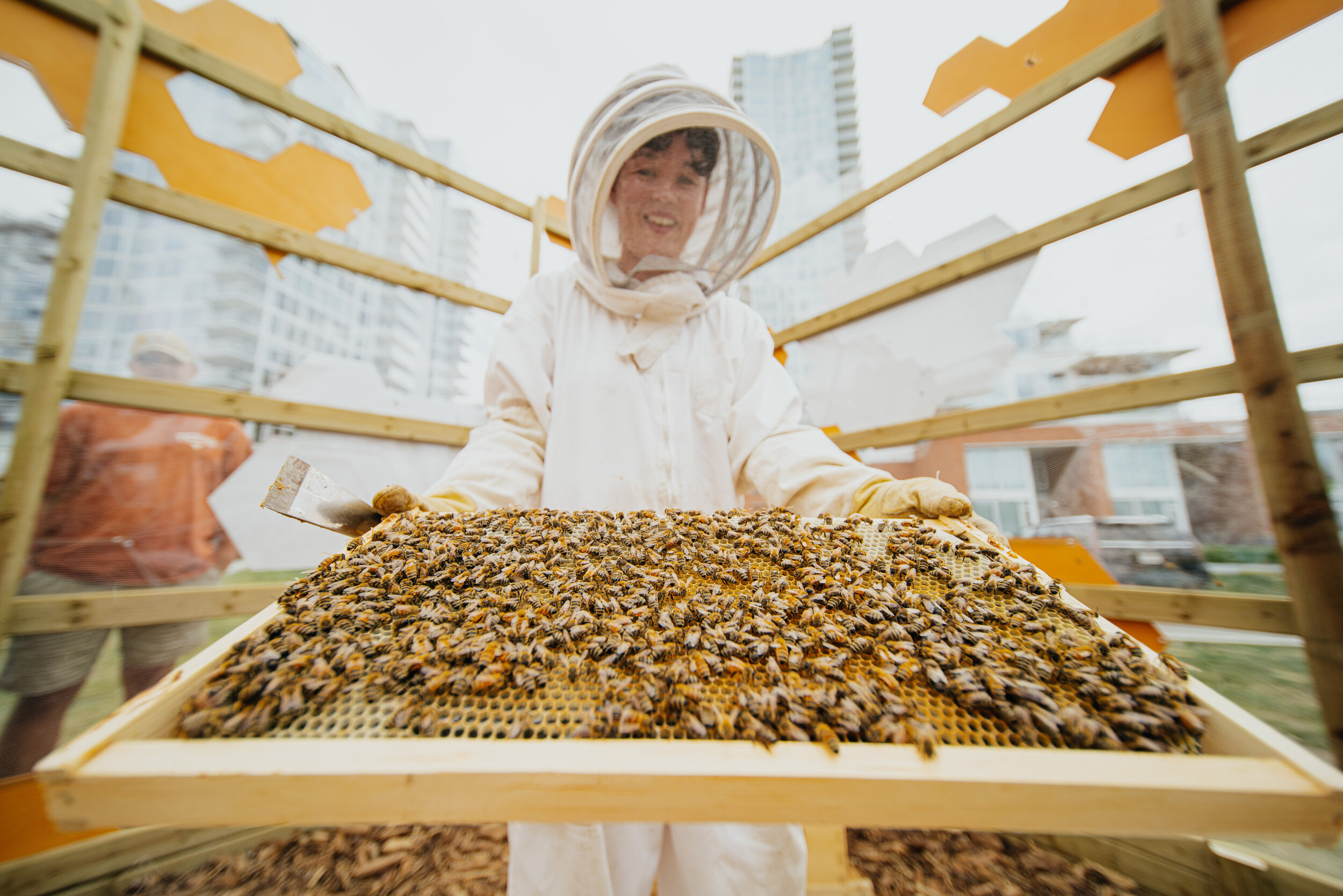The Winter Life of Bees
East Village Beekeeper, Amber Yano of MOB Honey
As a busy summer for our resident EV pollinators comes to an end and we prepare for our honey bees to head off to their winter hideaway, we asked our beekeeper, Amber Yano of MOB Honey, to tell us more about the life of bees in winter. Here is what we learned…
“After honey harvest the hives, each weighing 100 lbs, are moved to one of my farms in Rocky View County.
Leading up to the move, I’ll visit the EV hives the night before to seal up the entrances, once the foragers have returned home for the day. On moving day, a team of two will ratchet strap and haul each hive onto the truck bed. All the bees are nestled safely inside and no foragers will be left behind. Once we get to the farm, we unload the hives and open the entrances. The farm is 30km from East Village, far enough away so that no bees will attempt the long flight back.
Did you know honey bees don’t hibernate?! They cluster. It’s too cold outside to forage and nothing is blooming, so the season makes up their longest lack of nectar “flow”. To survive the long winter “dearth” they eat the honey they’ve produced through the summer. During harvest, I leave enough behind to ensure they stay healthy.
The honey acts as their carbohydrate, providing sufficient fuel to expend a ton of energy performing their “heating” actions. When heater bees vibrate their abdomens, it generates heat, keeping their hives at an internal temperature of 35°C.
There are many ways we prepare the hives for winter including organic treatments to fight the pesky varroa destructor mite. Beekeepers don’t want overloads of this mite during the winter months, so we zap them in fall!
We also wrap them tightly in Reflextec silver insulation, reduce the number of entrances and put mouse guards on. We put “quilt boxes” on to help trap condensation and prevent it from dripping on the bee cluster. You know what they say, ‘In winter, wet bees are dead bees!’
Around the middle of October, I tuck them in and say good luck and goodbye.
A chinook day in December will allow us to peek inside and check on honey stores. If they are low, we feed fondant, a bee candy that won’t add too much moisture to the hive.
The next full inspection takes place in March or April, weather dependent. Shortly after we’ll safely transport them back so they can spend another summer with all of you in East Village, helping to create a healthy city!”

